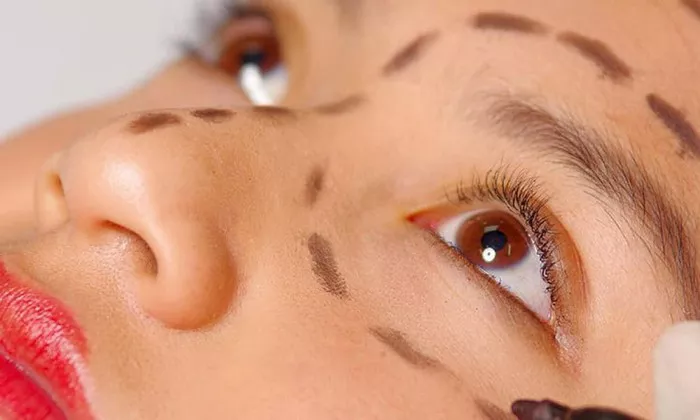Blepharoplasty, commonly known as eyelid surgery, is a popular cosmetic procedure that aims to rejuvenate the appearance of the eyelids by removing excess skin, fat, and muscle. It is a common concern for individuals considering blepharoplasty to wonder if the procedure will leave visible scars. In this article, we will explore the topic of scarring in blepharoplasty and provide insights into what patients can expect in terms of scarring after the surgery.
Understanding Blepharoplasty and Incisions
Before discussing scarring, it is important to have a basic understanding of what a blepharoplasty entails. Blepharoplasty is a surgical procedure that can be performed on the upper eyelids, lower eyelids, or both. The surgeon makes careful incisions along the natural creases of the eyelids to minimize visible scarring.
During upper eyelid surgery, an incision is typically made along the crease of the upper eyelid, allowing the surgeon to remove excess skin, fat, and muscle. The incision is strategically placed to be hidden within the natural fold of the eyelid when the eyes are open.
For lower eyelid surgery, the incision is usually made just below the lower lash line or inside the lower eyelid. This approach allows the surgeon to remove or redistribute excess fat and tighten the skin and muscles. Incisions made on the inside of the lower eyelid are known as transconjunctival incisions and do not leave visible external scars.
Scarring and Blepharoplasty
While scarring is an inherent part of any surgical procedure, the goal of a skilled surgeon in blepharoplasty is to minimize visible scarring and ensure that any scars are discreetly hidden within the natural contours of the eyelids.
Upper eyelid incisions are placed in the natural creases of the eyelids, making the resulting scars less noticeable. Over time, these scars tend to fade and become more inconspicuous. In most cases, they are barely visible when the eyes are open and are well-hidden within the folds of the eyelids.
For lower eyelid surgery, the choice of incision location depends on the patient’s specific needs and concerns. Incisions made below the lower lash line tend to heal well and result in fine, inconspicuous scars that are easily concealed with makeup or naturally covered by the lashes. Transconjunctival incisions made on the inside of the lower eyelid do not leave external scars since the incision is hidden inside the eye.
It is important to note that each individual’s scarring response may vary. Factors such as genetics, skin type, and the body’s natural healing process can influence how scars form and fade over time. However, with proper care and following the surgeon’s post-operative instructions, the majority of patients experience minimal scarring that becomes less noticeable over time.
Scar Management and Recovery
To minimize the appearance of scars and promote optimal healing, it is important for patients to follow post-operative care instructions provided by their surgeon. Here are some general guidelines for scar management and recovery after blepharoplasty:
Keep the Incisions Clean
Proper hygiene is crucial during the healing process. Patients should carefully clean the incisions as directed by their surgeon to prevent infection and promote healing.
Avoid Excessive Sun Exposure
Protecting the incisions from direct sunlight is essential. UV rays can cause scars to darken and become more noticeable. Patients should wear sunglasses, hats, or use sunscreen specifically formulated for the delicate skin around the eyes to shield the incisions from the sun.
Follow the Surgeon’s Instructions
Surgeons typically provide specific guidelines on wound care, the use of topical ointments, and when to resume activities such as wearing contact lenses or using eye makeup. It is important to adhere to these instructions for the best possible healing outcome.
Be Patient
Scar healing is a gradual process that takes time. Scars may appear red, raised, or slightly visible during the initial healing phase. However, with proper care and the passage of time, scars typically become lighter, flatter, and less noticeable.
Conclusion
Blepharoplasty is a surgical procedure that aims to rejuvenate the appearance of the eyelids. While scarring is an inherent part of any surgery, skilled surgeons strategically place incisions along natural creases to minimize visible scarring. Upper eyelid scars are discreetly hidden within the eyelid folds, while lower eyelid scars are often inconspicuous and can be easily concealed with makeup or naturally covered by lashes. Following proper scar management and post-operative care instructions can help promote optimal healing and minimize the appearance of scars. It is advisable to consult with a qualified plastic surgeon to discuss individual concerns and expectations regarding scarring before undergoing blepharoplasty.

